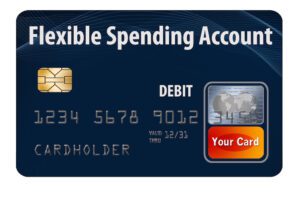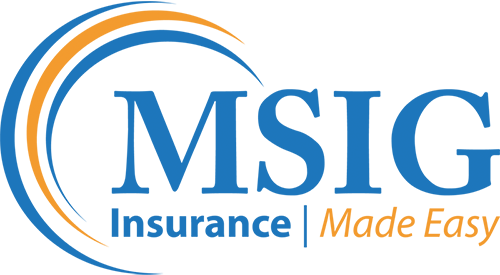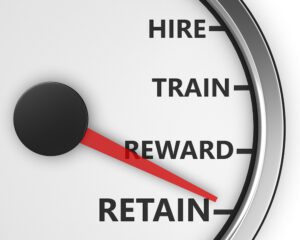
Employee benefits play a crucial role in attracting and retaining top talent while promoting overall employee well-being. Health Savings Accounts (HSAs), Flexible Spending Accounts (FSAs), and Health Reimbursement Arrangements (HRAs) are powerful employee benefit tools that enable both employers and employees to manage healthcare costs more efficiently. In this post, we will delve into the features and differences of each account type and explore how employers can leverage them to create comprehensive and appealing employee benefits packages.
Health Savings Accounts (HSAs)
Health Savings Accounts (HSAs) are tax-advantaged savings accounts designed to help individuals with high-deductible health plans (HDHPs) save money to cover qualified medical expenses. Key features of HSAs include:
- Eligibility: To open an HSA, individuals must be enrolled in a qualified HDHP and cannot be covered by other health insurance, Medicare, or be claimed as a dependent on someone else’s tax return (FSAs nor HRAs require an individual to be enrolled in an HDHP).
- Contributions: Employees and employers can contribute pre-tax money to an HSA, reducing the employee’s taxable income. For example, let’s say an employee earns $50,000 annually and contributes $3,000 to their HSA, the employee’s taxable income for the year would then be $47,000.
- Tax-Free Withdrawals: When used for qualified medical expenses, withdrawals from HSAs are tax-free, making them a valuable tool for managing healthcare costs effectively.
- Portability: HSAs are employee-owned savings accounts, so employees can take their HSA with them if they change jobs or retire.

Flexible Spending Accounts (FSAs)
Flexible Spending Accounts (FSAs) are employer-sponsored benefit accounts that enable employees to set aside pre-tax funds to cover qualified medical expenses. Key features of FSAs include:
- Contributions: Like an HSA, employees and employers can contribute pre-tax money to an FSA. However, it is common for FSAs to be solely funded by employee contributions.
- Use-It-or-Lose-It Rule: One significant difference between FSAs and HSAs is the “use-it-or-lose-it” rule. Funds contributed to an FSA generally must be used within the plan year, or employers may offer a grace period or allow a limited carryover amount to the following year. For instance, if an employee contributes $2,500 to their FSA for the year but only uses $2,000 for eligible medical expenses, they may lose the remaining $500 if their employer does not offer a carryover provision or grace period.
- Model: It is common for employees to use a Benefits Card to pay for eligible medical expenses. Some expenses may be automatically approved, but it is important to hang on to documentation of your purchase to share with your employer.
- Portability: FSAs are not portable unless they are eligible to extend under COBRA. For questions about COBRA, reach out to an MSIG employee benefits agent.

Health Reimbursement Arrangements (HRAs)
Health Reimbursement Arrangements (HRAs) are employer-funded accounts that reimburse employees for qualified medical expenses. Key features of HRAs include:
- Contributions: Unlike HSAs, and FSAs, HRAs are solely funded by employers. However, contributions are not included in the employee’s taxable income. For example, if an employer allocates $1,500 to an employee’s HRA for the year, that amount is not subject to income tax.
- Customizable Plans: Employers have more flexibility in designing HRAs, allowing them to tailor the plan to meet specific employee needs. Employers can choose to offer HRAs that cover a wide range of medical expenses, such as deductibles, copayments, prescription drugs, and even eligible non-medical expenses.
- Model: Like an FSA, it is common for employees to use a Benefits Card to pay for eligible medical expenses. For companies without Benefit Cards, employees pay for eligible expenses out-of-pocket and then submit receipts for reimbursement from the HRA. So, if an employee incurs $500 in eligible medical expenses, they can submit the relevant receipts and documentation to their employer, who will then reimburse them for the $500 (if this is within the employer’s maximum) from the HRA.
- Portability: Depending on the plan design, HRAs may be portable to a limited extent if an employee changes jobs, although this portability can vary based on plan rules and employer policies. However, like FSAs, they can be eligible if coverage is extended under COBRA.

Employers Utilizing HSAs, FSAs, and HRAs for Employee Benefits
Integrating HSAs, FSAs, and HRAs into an employee benefits package can offer several advantages to both employers and employees:
Attracting and Retaining Talent
Offering these accounts demonstrates an employer’s commitment to employee well-being and can make their benefits package more competitive. A company that provides one of these tools could give them just the edge they need to attract the right candidates.
Cost Savings
For employees, the tax advantages of these accounts can lead to substantial cost savings on healthcare expenses, in addition to resulting in reduced payroll taxes for employers.
Addressing Unique Employee Situations
HSAs, FSAs, and HRAs offer customization benefits, catering to employees at different life stages. For instance, young employees with lower medical expenses can take advantage of HSAs to build savings for future healthcare needs and emergencies, while employees with families may find FSAs more valuable for managing ongoing medical costs like copayments and prescription medications. This customization empowers employees to manage expenses effectively, leading to a healthier and more satisfied workforce.
Education
Implementing these accounts often requires educating employees on their benefits and how to make the most of them, which can lead to improved financial literacy and responsibility. Employers can conduct workshops, offer educational materials, and provide access to online tools and resources, empowering employees to make informed decisions on effectively using these accounts in tandem with their health insurance plans, ultimately maximizing savings potential.
Retiree Health Benefits
HSAs can also serve as a valuable tool for employees planning for retirement. If employees maintain their HSAs beyond their working years, they can continue using their HSA funds tax-free for qualified medical expenses in retirement. This can provide peace of mind for retirees concerned about healthcare costs beyond Medicare during their golden years.
 Conclusion
Conclusion
HSAs, FSAs, and HRAs are versatile tools that not only offer tax advantages but also play a pivotal role in fostering a healthier, more engaged, and satisfied workforce. Employers that prioritize employee benefits and provide access to these accounts will not only strengthen their organization’s overall well-being but also demonstrate their commitment to their employees’ long-term financial security and health.
If you have questions about any one of these as an employer, reach out to an MSIG employee benefits agent who can walk you through each of them and help you determine which one is right for your organization.

 Conclusion
Conclusion

